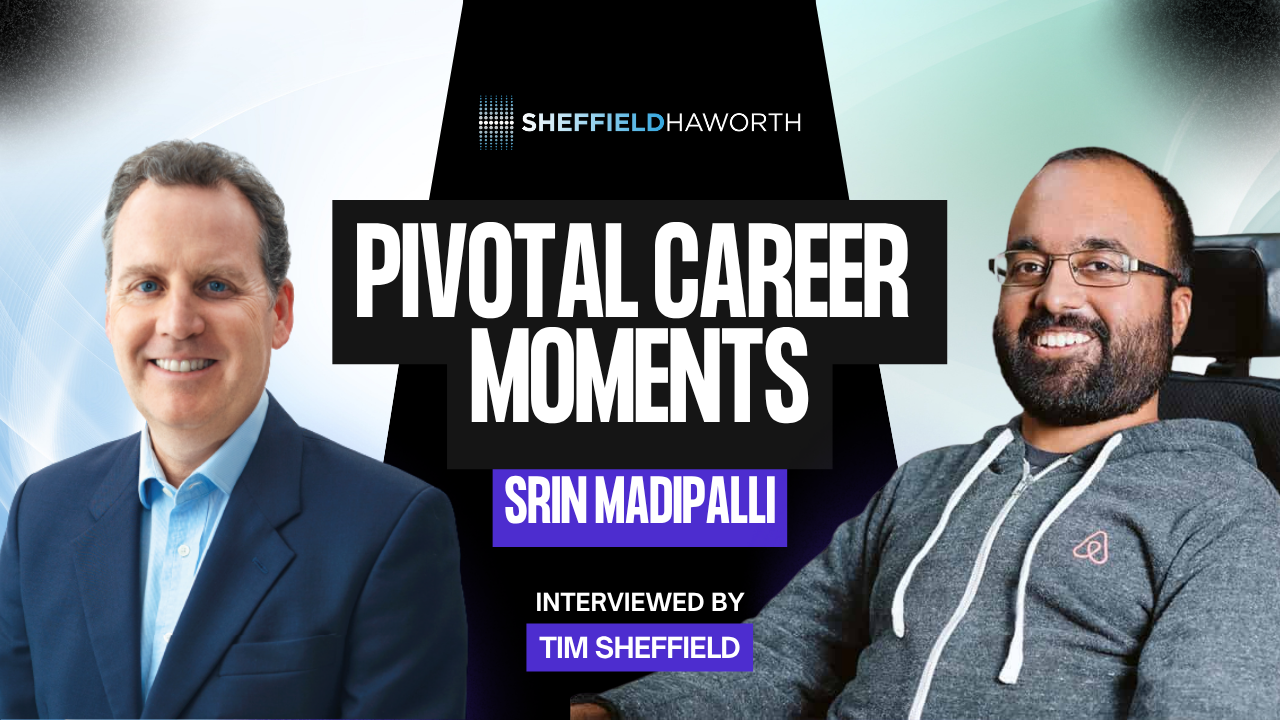By Chris Hornby, Director of Executive Search, Sheffield Haworth
Kris Lichter describes himself as an explorer at heart. He’s certainly passionate about the potential for deep tech to solve many of the seemingly intractable problems the world currently faces, from scalable renewable energy to colonizing distant planets.
You may say he’s a dreamer, to quote John Lennon. But he’s also a realistic investor and business owner with many successful businesses under his belt. Chris Hornby recently chatted to Kris to ask him about deep tech. What makes it different from other technology segments? What kinds of skills do deep tech leaders need? And what are the financial risks and rewards of operating in such a research-heavy space?
Q: How would you define deep tech and why play in that space?
A: Deep technology is any solution composed of people, time, and technology that fundamentally alters the world as we know it in a significant, material sense.
I’m not talking about incremental changes to the insurance industry or making it easier to buy food at the supermarket. I’m talking about large-scale problems, opportunities and spaces that have enormous transformational potential – AI, space, renewable energy, agritech and synthetic biology, to name a few.
“Don’t expect an exit in the next three to five years. It’s folly if you do, and risks derailing the focus and execution required to succeed.”
These are areas of development that, were someone to come along and make a significant contribution to advancing the delivery of those solutions and capabilities, the world is changed forever.
That’s the first part of the answer. The second part of what deep tech is and how it differs from other investment spaces is that the timelines are typically long. Oftentimes I get asked by other investors how they can get involved with technology and what to expect.
The answer I give is to expect they’re going to be in it for the rest of their life. You shouldn’t expect an exit in the next three to five years. In fact, it’s probably folly if you do, and risks derailing the focus and execution required to succeed.
With deep tech, you’re knowingly getting into an opportunity with a very long tail. So while it’s certainly possible there are shorter-term exits and liquidity events, forcing them into a shorter duration is not realistic.
Q: Beyond that longevity, what are the practical differences between deep tech and other technology segments?
A: It’s really around degree of difficulty, which goes hand in hand with the longevity point. If fusion was so easy to crack, it would already be in our hands, right? Fusion is classic deep tech, if there is such a thing. It’s literally something we must have, as soon as we can.
That net positive, commercial scale fusion is not yet here is primarily due to technical complexity, rather than insufficient funding, although certainly the two go hand in hand. Substantial government investment in fusion has been ongoing for decades, with significant venture investment in commercial fusion organisations on the rise.
Because of the complexity, the fusion community generally accepts there may be multiple paths to a workable solution – different reactor designs, for example. So it’s the level of difficulty involved in either the R&D and/or subsequent commercialization that typically marks something as truly deep tech.
But let me be clear: deep tech may be inspired by science fiction, but it’s firmly grounded in scientific fact. Examples abound: solid hydrogen energy, orbital refuelling, plant biomanufacturing and AI-driven genomics. These are all areas where well-defined science underpins really exciting development and innovation.
Teams developing deep technology solutions are on a real journey – hopefully a well-defined one with ambitious but clear milestones that offer north stars for the road ahead. However, when it comes to commercialisable-ready products, services, and solutions there’s almost always a lot of work to be done. Therein lies the challenge, the opportunity, and the inspiration to keep committed.
Q: We’ve seen a slowdown in investment in traditional technology segments like SaaS or Data. That said, we’ve probably seen less of a slowdown in deep tech investments. Does this match with what you’re seeing, and why do you think that might be?
A: I’m not surprised at all that deep tech is less impacted by market conditions. It comes down to a somewhat neutral fact: deep technology is by its very nature untethered to temporal market needs.
If you’re investing in any of these deep technology market segments, you understand and accept that you are committing to a multi-year effort in the conversion from research to market-ready. From that perspective, whether you get involved early or later to a given deal probably isn’t materially affecting your appetite or conviction for the opportunity.
Q: You’ve not only lived and breathed the world of deep tech as an operator, but you’re also an avid investor. What are the benefits and risks involved?
A: We live in an on-demand world, and the technology industry is particularly plumbed and optimised for speed and instant gratification. Deep tech is very different than the software trajectories most of the venture world has become accustomed to, and for some, that is a real struggle as they seek to move into deep technology. They see the outsized opportunity, but they simply aren’t accustomed to the timelines or degree of difficulty.
Experienced deep tech operators and investors plan for the worst and then use their creativity to find faster outcomes wherever possible. I don’t think shorter-term exits and improving the world through deep tech are mutually exclusive. The art is in finding harmony between the two.
“Deep technology requires a different ethos, a different point of view, and most certainly a different level of patience.”
Deep technology requires a different ethos, a different point of view, and most certainly a different level of patience. Whether you’re a CEO or CFO in a deep technology company or you’re investing in those teams, you have to come at it from the perspective of this being a complex endeavour that requires a deep well of patience. There will be lots of fits and starts. That’s what good R&D is.
The willingness to learn and grow and try again is something that the best deep technology companies have in every component of their ecosystem, from each employee to the executive team to the investors and the market.
Even the market segment in which that company operates must have patience. You can’t have a space company trying to put a new propulsion system into the rocket community and have the market say, can I get it tomorrow? That’s not realistic.
For success to be achieved, all of these market components or dynamics have to come together. Anyone operating in deep tech must understand and embrace that notion. And yes, you push as hard as you can. You drive performance and metrics and achievement, and you learn – and you try to do that as rapidly as you can. But you have to think about it as bitesize pieces, so that over time these individual milestones combine into something extraordinary. Successful deep tech is the art of embracing each stage – the early discovery baby steps, the large technical leaps, the accelerating commercial milestones, and eventually (hopefully), the realized potential at scale.
Q: What are the hallmarks of a deep tech leader? What are the differences – if any – between a deep tech leader and a leader in a traditional technology business?
A: I do think there’s a difference between a deep tech leader and someone more in an enterprise SaaS or consumer-facing app business. And I think that difference comes down to the somewhat unique combination of vision and operational excellence that deep tech leaders often have.
The vision is so important to deep technology because by its very definition, you’re swinging for the fences, you’re doing the moonshot. You’re looking out and you’re having to paint a road that goes from the Earth to the moon, and maybe even beyond and back again.
“A deep tech leader must convincingly and clearly articulate not only the potential at journey’s end, but the sequence and necessity of the unique steps required along the way.”
As we’ve already acknowledged, any deep tech effort inherently involves a long road with many unknowns and much uncertainty. A deep tech leader must convincingly and clearly articulate not only the potential at journey’s end, but the sequence and necessity of the unique steps required along the way.
Vision is important. At the same time, that person must be capable of running a research-heavy operation and come in and say “Okay, what can we do today to make a real impact tomorrow? The next month? What can we do in a year?”
This is a very binary skillset – to have vision and the ability to convince people to come along and at the same time have exceptional operational chops. The chops to drive the organisation day-to-day so as not to lose sight of the hugely important yet incremental nature of the progress being made most of the time.
Q: What excites you most about the future of deep tech, and where do you see yourself contributing to its success?
A: I operate and invest in deep technology because there’s no more valuable or fulfilling place. I intend on spending every waking moment making it significantly better.
We face real planetary and species level challenges, some that are generations in the making. No one would disagree with that. How do we ensure a healthy climate while ensuring we have all the food, energy, and power we need for the future? How can we cure diseases that have been intractable for millennia? How do we expand humanity’s footprint beyond Earth?
“How can you not be excited by being part of [the Deep Tech] journey? Anything less is, to me, not worth it.”
How can you not be excited by being part of that journey, whatever the contribution or role? Is there really a better place to devote your time and resources? The answer seems pretty clear to me.
In terms of my role, I’ll continue to do much of what I do today, which is operate and build companies that I hope will make a difference. I hope I’ll also be lucky enough to help people much smarter than me achieve dreams we collectively believe will result in a better world for our children, grandchildren and the many generations to come.


















